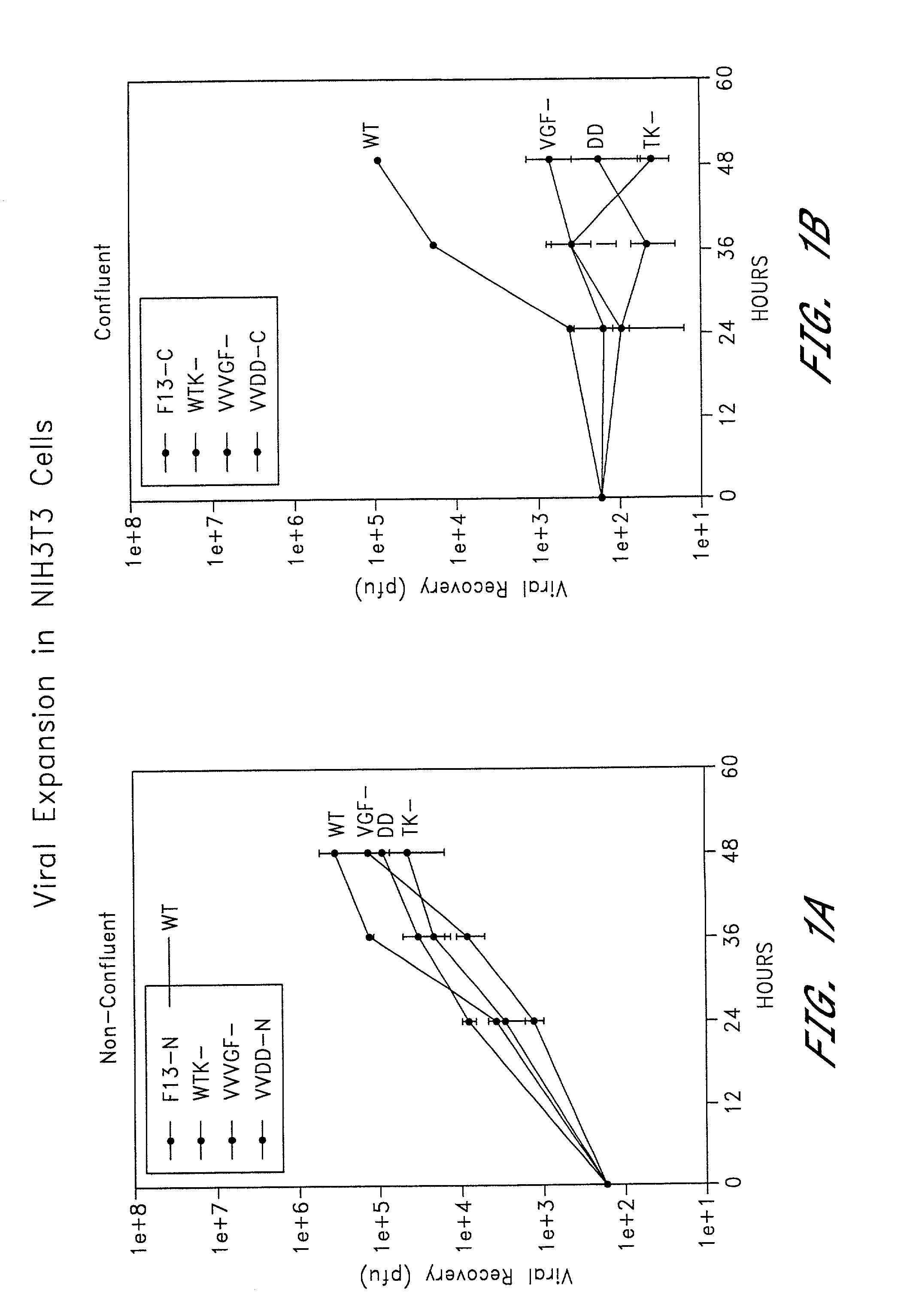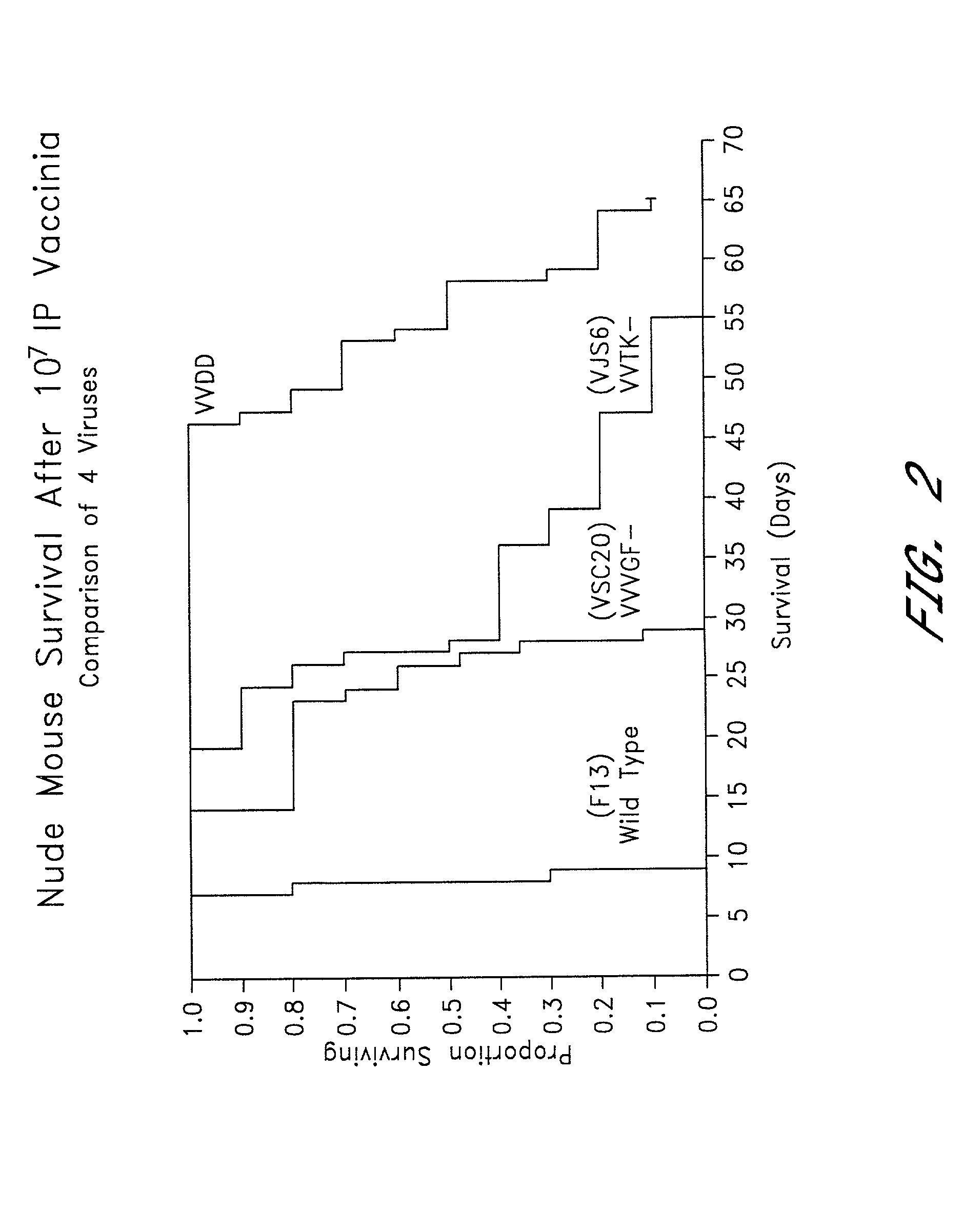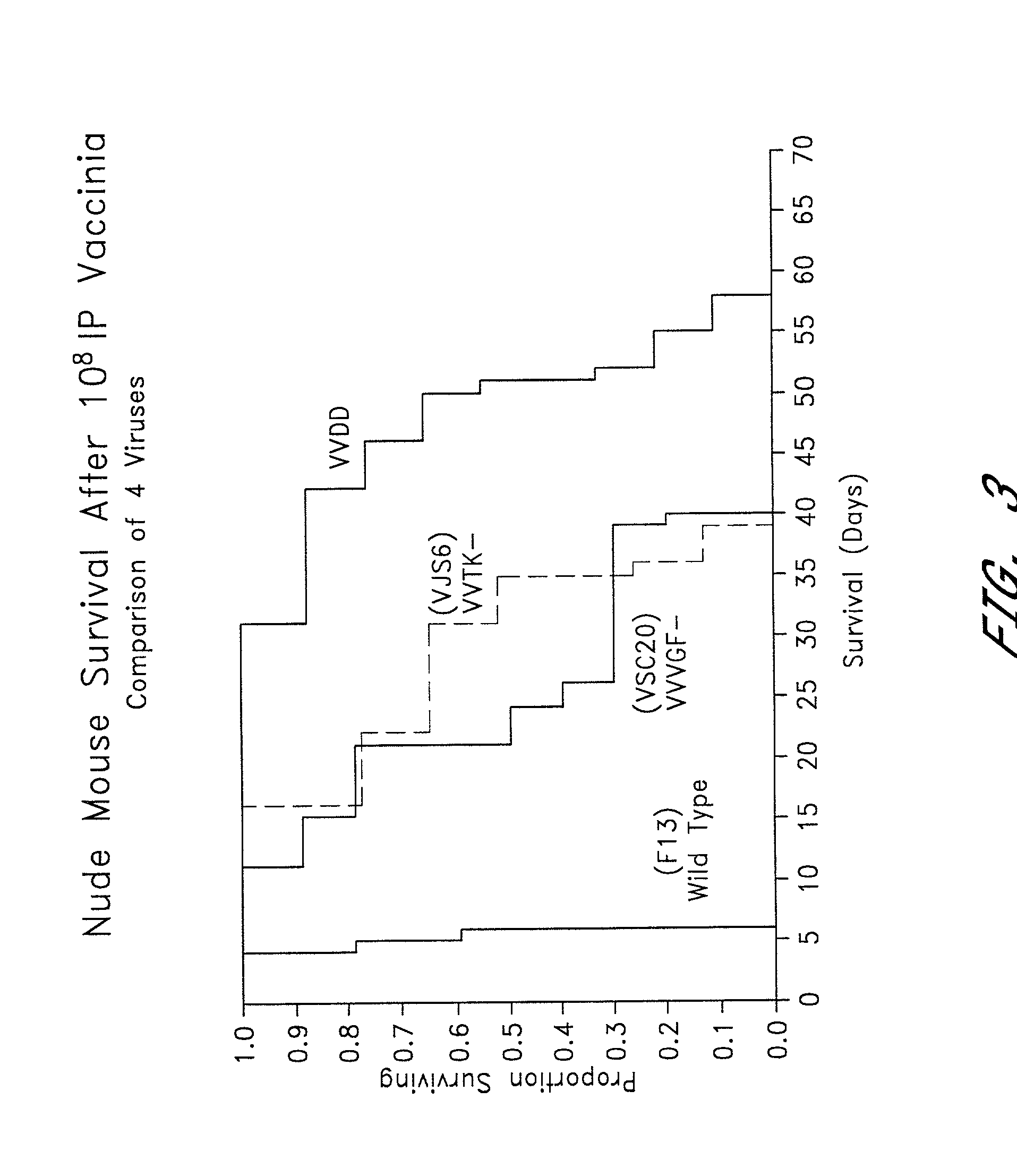Combined growth factor-deleted and thymidine kinase-deleted vaccinia virus vector
a technology of growth factor and vaccinia virus, which is applied in the field of combinatorial vectors, can solve problems such as double mutant viral reproduction
- Summary
- Abstract
- Description
- Claims
- Application Information
AI Technical Summary
Problems solved by technology
Method used
Image
Examples
example 1
Construction of a TK / VGF Negative Phenotype Double Mutant Vaccinia Virus
[0088] A vaccinia virus containing mutations in the TK and VGF genes was constructed to produce a recombinant virus with negative TK and VGF phenotypes. A two tier process was used to generate the double mutant vaccinia virus. In the first tier the VGF genes were inactivated, followed by the second tier, in which TK gene was inactivated.
[0089] Mutations in the VGF genes were constructed according to the method of Buller, et al. (1988). Briefly, a 1.6-kilobase-pair BglII restriction endonuclease fragment containing the complete nucleotide sequence encoding VGF was isolated from pVG3 as described in Venkatesan, et al., J. Virol. 44:637-646 (1982). The Klenow polymerase repaired fragment was ligated into HincII-cleaved pUC13, and the mixture was used to transform competent Escherichia coli JM109. .beta.-Gal-colonies (white versus .beta.-Gal+blue) were isolated by using the X-Gal-IPTG screening sys...
example 2
An Alternative Method of Creating a Double Mutant Vaccinia Virus
[0100] In another embodiment, the double mutant vaccinia virus is generated by introducing both VGF and TK mutations through homologous recombination. The VSC20 virus discussed in Example 1 is used to infect HuTk-143B cells as described above. These cells are contacted with a vaccinia virus shuttle vector containing a mutated TK gene.
[0101] The pSC65 vector is used as the source of the TK gene and is described in Chakrabarti, et al., (1997). The XbaI site of the pSC65 vector within the flanking region of the thymidine kinase gene is abolished following digestion using the Klenow enzyme and dNTP filling. A segment of the plasmid is amplified using the PCR reaction to introduce a BSSHII site between the TK flanking region, allowing for the insertion of the multiple cloning site (MCS) of pBluescript KS II (+) (Stratagene; La Jolla, Calif.). To prevent possible antisense transcripts driven by the native vaccinia thymidine k...
example 3
An In Vitro Comparison of the Double Mutant Vaccinia TK-, VGF-, and Wild-Type Viruses
[0103] To compare the growth characteristics of the double mutant VGF- / TK-vaccinia virus with those of the single TK- and VGF-mutants and the wild-type virus, each were grown in confluent and non-confluent cells. Six well plates of confluent and non-confluent (dividing) NIH3T3 (growth factor dependent) were infected with 167 pfu per well of one of the following vaccinia viruses: F13 (wild-type)(Blasco & Moss, Gene 158:157-162 (1995)), VJS6 (thymidine kinase deleted)(Carroll, et al., Vaccine 15:387-394 (1997)), VSC20 (vaccinia growth factor deleted), or VVDD (double deleted). At 24, 36 and 48 hours the growth media was removed, and the cells were harvested as described above. The total viral titers was measured in a plaque assay described below.
[0104] The plaque assay was performed as described above with certain modifications. The cells were resuspended in 2 ml of DMEM-2.5 and subjected to one freez...
PUM
| Property | Measurement | Unit |
|---|---|---|
| Power | aaaaa | aaaaa |
| Volume | aaaaa | aaaaa |
| Volume | aaaaa | aaaaa |
Abstract
Description
Claims
Application Information
 Login to View More
Login to View More - R&D
- Intellectual Property
- Life Sciences
- Materials
- Tech Scout
- Unparalleled Data Quality
- Higher Quality Content
- 60% Fewer Hallucinations
Browse by: Latest US Patents, China's latest patents, Technical Efficacy Thesaurus, Application Domain, Technology Topic, Popular Technical Reports.
© 2025 PatSnap. All rights reserved.Legal|Privacy policy|Modern Slavery Act Transparency Statement|Sitemap|About US| Contact US: help@patsnap.com



